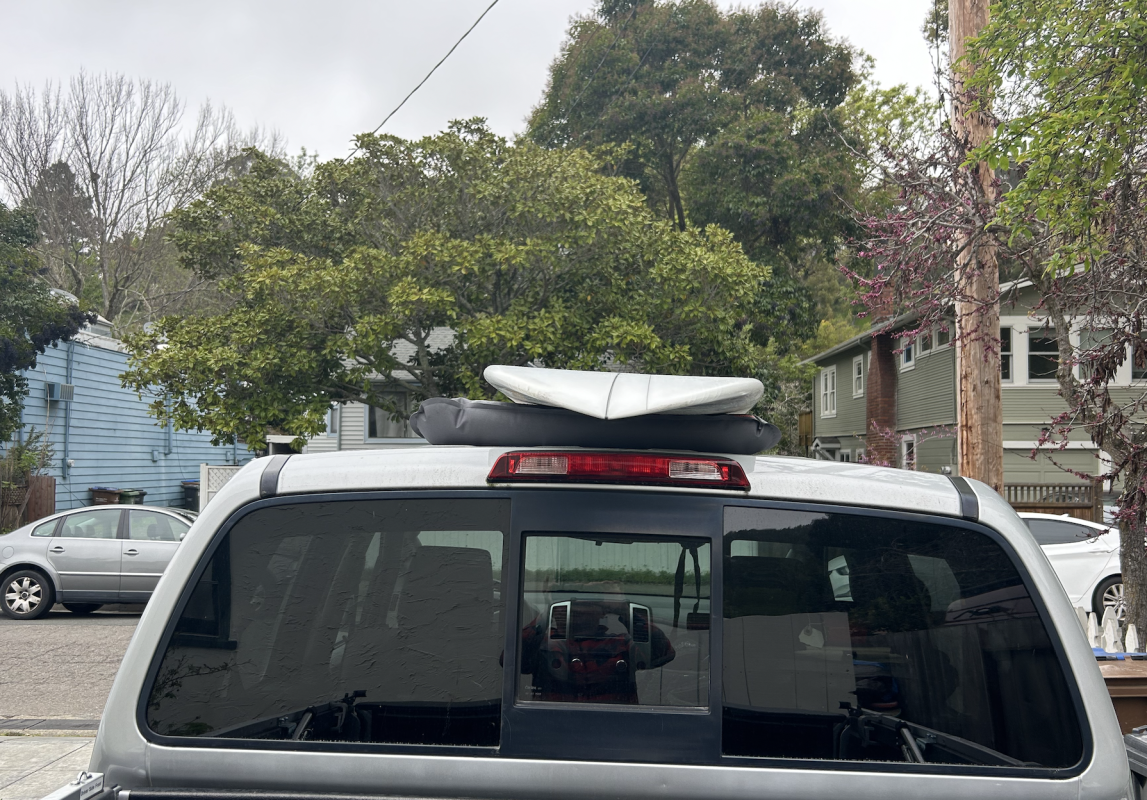The Arena Media Brands, LLC and respective content providers to this website may receive compensation for some links to products and services on this website.
Last February I spent a week in Kauai with my family. I’d booked a rental SUV with roof racks, but a snafu at the airport counter meant we’d be driving around all week in a Dodge Charger instead. Hey, it’s Kauai, it’s paradise, no big deal. Except, the whole point of the SUV with a rack was being able to cart boards around (I like to rent boards on family trips rather than bring my own). Since the Charger didn’t have racks, I was kinda screwed. It meant I’d have to surf in places with board rentals within walking distance, rather than grab a couple boards for the week at the beginning of the trip, and just surf on my merry way around the island.
What I should have done was pack my Sea to Summit Pack Rack Inflatable Roof Rack. These things are awesome, and kinda indispensable on trips that involve rental cars. They’re pretty simple. Two inflatable pads with straps that run along your vehicle’s ceiling that cinch ‘em down nice and tight. They come in a nice little stuff sack that employs Sea to Summit’s favorite trick: One half of the stuff sack is an air pump, which allows you to collect air in the sack and compress it and it fills the pads with air. Way easier than huffing and puffing into the inflation valve for a couple minutes.

You have to supply the straps to hold your board down but there’s thick, daisy chain webbing along the pads to secure whatever straps you want to use. The whole thing packs down to about the size of a really big super burrito. Or a Nalgene, if you prefer to measure in water bottle sizing, rather than burritos. Weighs about 20 ounces, so, next to nothing.
If you’re not familiar, Sea to Summit is a camping/adventure brand, and they make really high-quality stuff. These pads are no exception. They’re made with a waterproof 420 Denier nylon face fabric which is very tough so they’re not gonna rip or fray easily. Installation is so easy: put the racks on the roof, open the doors, pass the straps through the inside of the car, connect the straps via the buckle, and pull tight. About 30 seconds per pad is all it takes.
I’ve driven 60-plus mph with these on the roof and two boards stacked on it, with no issues. I’ve transported a kayak up there, no problems. I’ve never done it, but I’d be perfectly happy throwing a desk or a couch on these things on moving day, they’re that burly.

The only real issue with them I can think of is if it rains, the straps can wick water into the car because the wetness just migrates along the straps. But that’s an issue with any strap you might pass through a car, it’s not specific to these bad boys.
The use cases are nearly endless. Rental car is the obvious one–just toss these in your luggage and you’re set. If you’re considering buying a roof rack system for your vehicle that just has rails, you can save yourself a couple hundred bucks, at minimum, and just buy these. Or, if you have a vehicle that just has a bare roof, save yourself the headache of drilling into the roof to mount racks. Of course there are lots of reasons why you might want and need a more permanent rack solution, but you’d be surprised what you can haul with a set of inflatable racks.

These particular racks are on sale from Sea to Summit for about $80. They have a larger version, the Traveller Soft Racks, that I haven’t used, that run $150. They’re flatter, heavier, and don’t pack down as small, but they’re probably great, too. Bottom line: toss a set of inflatable racks in your travel bag or your trunk. You’ll be glad you did.
Buy the inflatable surfboard racks here.

